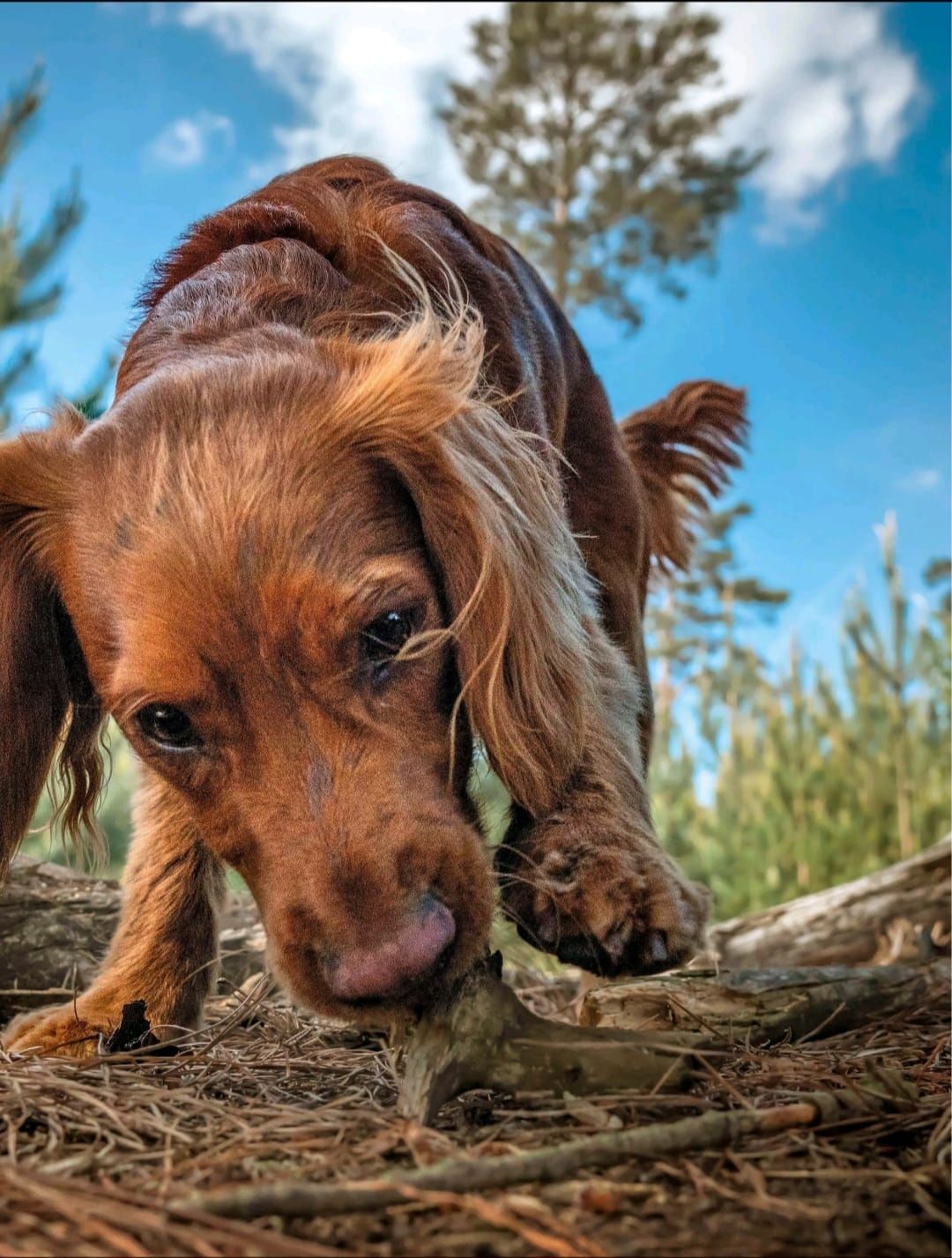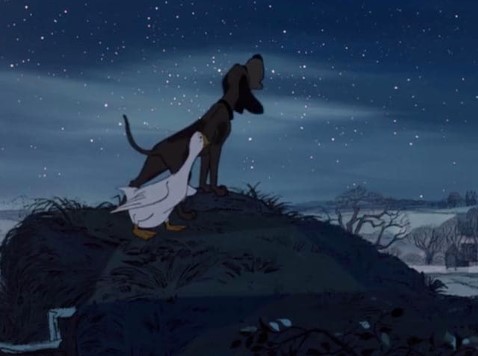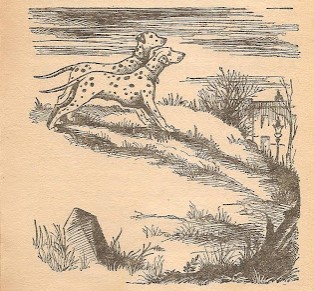
Peemail correspondence
Write about animals peeing? Well why not. I accepted the challenge and loved this commission. Getting to the bottom of it all, with leg-lifting terriers, dancing bees, stinky polecats, and tap-dancing spiders turned out to be super-fascinating. Wonderful also to bring in Pongo and Missus and the Twilight Bark from 101 Dalmatians.
Peemail correspondence
‘They barked to the north, they barked to the south, they barked to the east and west. And each time, they began with three very strange short sharp barks… All dogs know about the Twilight Barking. It is their way of keeping in touch with distant friends, passing on important news, enjoying good gossip.’
The Twilight Barking (sic) will be familiar to readers of Dodie Smith’s 1956 novel The Hundred and One Dalmatians and to those who grew up with the Disney animation. Pongo and Missis (renamed Perdy in the film version) bark to spread the message that their fifteen puppies are missing. The news travels from Primrose Hill via the Great Dane ‘over towards Hampstead’, to reach a remote Suffolk village, and soon the brave spotty dog-parents have their lead.

Barking is not the only way that dogs communicate. Much has been written about the meaning of our favourite pets’ vocal sounds, from whines and whimpers to horror-film howling. Stanley Coren, author of How to Speak Dog, identifies nine different types of sounds including barking in strings of three or four with pauses in between. This, he says, is an alerting call, so Dodie Smith was on to something when she imagined how a distressed dalmatian might sent out a mayday message. But barking mainly indicates the basic emotions such as fear and excitement.
Far more complex is the information conveyed through another messaging system – scent. A dog’s sense of smell is at least 40 times more sensitive than ours, and is used to decode signals from other dogs, include those left in urine. The sniffer can discern sex, age, diet and status from the merest dab of this fragrance. Once the ‘peemail’ has been read, the recipient will frequently respond with a message of their own. As with our social media, dogs can tune in to others’ conversations, get a clear picture of the habits and status of a creature they have never met, add a ‘like’, or engage in a bit of humble-bragging by overmarking – adding their own odours to overpower those of competitor. The male dog lifts a leg to distribute its scent as widely as possible. A higher mark indicates a bigger dog, so this is why your terrier, rotating its hips to near vertical, is cockily doing its best to elevate its status.
At play here are pheromones, the chemicals that turn a mere whiff into a fascinating piece of correspondence. The urine is purely the carrier service, the equivalent of Outlook or Gmail. The body of the message, containing the news, is a dense combination of chemicals. Often these are detectable only to those of the same species. A rabbit’s wee means a great deal more to one of its own kind than it does to a passing predator.
Pheromones can be contained in liquid or gas and be carried by air or water. Animals produce pheromones in glands or sacs situated in prominent areas such as the head, the rump and their excretion points. Dogs have paired pouches on each side of their anal sphincter that secrete liquid to mark territory as well as glands between the toes, which is why your dog can feel the urgent need to scratch the ground after defecating, especially if there is a female in heat nearby. He wants to leave his mark. She, meanwhile, can carry 52 different chemical variations in her urine, enabling a male to discern precisely when she is ready to mate. Overmarking is used more possessively by some species. Male rabbits, squirrels and foxes will sprinkle their mates with urine to warn others to keep their distance.
Other animals leaving messages in their waste include the beaver. It secretes a substance known as castoreum in the internal lining of its cloaca (a single opening for reproduction, defecation, and urination) and uses it to mark territory. Castoreum’s leathery smell has long been exploited in perfumery and historically has been used to treat ailments from headaches to diseases of the liver and spleen. Derek Gow, in his book Bringing back the Beaver, explains its efficacy: the castoreum of beavers that have fed on willow bark contains high concentrations of salicylic acid, the main ingredients of aspirin.
Otters are elusive but their spraint is a giveaway. Their messy excrement, sometimes containing pieces of bone and shell, gives off a distinctive jasmine-tea aroma – to humans. To the wide-ranging otter, spraint is a fact-filled Facebook page and an important way of keeping in social contact.
Famously smelly among our native animals is the polecat, with its reputation for releasing a noxious defensive odour. Even its Latin name, Mustela putorius, means stinky. The polecat was once known as the foul-mart, distinguished by its malodour from the sweetmart, or pine marten, which evidently had a more palatable pong. The female of another mustelid, the weasel, lays a scent trail on the ground when she is ready to mate, while her hopeful partner covers this with his own in the expectation that he will be the sole candidate. The slug is another well-known trail-blazer, its slime an information superhighway packed with pheromonal posts that tell fellow gastropods all about nearby food sources and dangerous rivals.
In the same way that advertisers have long promoted fragrance and aftershave, the most typical message brought by the chemical delivery service is all about sexual availability. The female moth is a supreme example, giving out a pheromone mix that can attract keenly attuned males from more than three miles away. Aware of her superpower, she uses it sparingly. As soon as a mate turns up, she switches off the pheromones, which, if released all at once, is estimated to be enough to attract a trillion males.
The collaborative ant has clever and efficient ways of using scents. Scout ants, on finding a food source, drop a strong trail that others can follow, leaving diminishing amounts of scent along the route until the food is gone. Those on sentry duty release an odour bringing others to their aid if the nest is attacked. Ants also use visual cues to identify friend or foe, as charmingly observed by rural poet John Clare in 1824: ‘I have often minded that two [ants] while passing each other would pause like old friends separated and as if they suddenly recollected each other, they went and put heads together as if they shook hands or saluted each other.’
Bees’ pheromones encourage workers to feed larvae, signal the presence of danger and keep the swarm together. The most famous form of apiarian messaging is the waggle dance. Performed by a forager bee, this aerial jive not only alerts others to a promising flower patch, but through its patterns gives specific information about how far they need to go and in which direction. Bees also have a circle dance, a news summary with the headline that there is some good nectar nearby.
A spider can’t dance and can’t call – in fact, it can’t hear – but it does use its most abundant feature to communicate. Males tap their legs to send vibrations to the females which pick them up with sensory organs known as sensilla. Rabbits use their legs too – a trait known to generations of children who watched Thumper in Walt Disney’s Bambi. A firm thump on the ground alerts others to danger and adds an aural dimension to the rabbit repertoire of warnings that includes showing their white scuts.
Birds also contribute to the animal kingdom’s percussion section. The greater spotted woodpecker is the UK’s headbanging drummer, whose distinctive drumroll, at 40 strikes per second, is used to indicate territory. Both sexes hammer tree trunks with their heads, the males usually adopting a faster tempo than the females. Another bird known for its drumming is the snipe, which makes the noise – more akin to bleating than pounding –with its tail feathers. In mating season, snipes drum at twilight, usually in a display flight, sometimes to divert predators.
The most familiar bird music to our ears is song, a repetitive chorus line generally about territory or attracting mates with some alarm calls thrown in. There are regional variations; town birds sing louder and at a higher pitch than their rural cousins to be more clearly heard amid the city clamour.
Remarkably, according to a citizen science project in Australia, frogs’ calls also vary regionally. Generally, those of the same species tend to favour the same key. Bull frogs call to establish territory and attract mates, taking turns to call so they can remain individually distinguishable within the frog chorus. An interloper from another area will cause the residents to alter their call to compete.
An animal which famously communicates principally by sound is the bat. The flying mammals use echolocation to help each other find the insects that they catch and eat mid-air. The sound waves emitted by the bats bounce off objects, enabling them to determine direction and distance. The higher the frequency, the more detailed a picture a bat gets of its surroundings. Bats are understood to use some of the most complex vocal sequences in the mammal world to describe their territory, instruct their young, and to recognise each other.
While we humans are developing ever-more complex tools such as AI to help us communicate, we are yet to understand the interactions of some of our more sensorily-gifted fellow creatures.
Meanwhile, somewhere in a frozen London landscape, as a chain of barking crosses ‘miles and miles of country, miles and miles of suburbs, and a network of London streets’, Pongo and Missis, still as statues, stand listening, listening.

Making long distance calls
Exotic species beyond our shores have some unusual communication methods.
Elephants communicate with infrasound, below the range of human hearing. It can travel long distances to coordinate group movements or locate reproductive partners. Rhinoceroses, giraffes, and whales use it too.
Squid and octopus can change not only their colour but the patterns on their skin, sending out stripes and polka-dots, glowing bright for love and turning pale to indicate availability, attraction and fear.
Male alligators eject a powerful scent from glands in their jaws to attract a mate and creating a miasma which hangs over the swamps during spring mating season.
Meanwhile in the jungle, male ring-tailed lemurs start stink fights by rubbing their tails on the scent glands in their wrists then waving them at their rivals. Some monkeys such as capuchins anoint themselves and others with smelly material as part of social bonding.
There are more than 2,000 species of fireflies and each has its own unique light pattern. The light comes from the enzyme luciferin reacting as oxygen is pulled across the insect’s abdomen. The roving males flash as they fly, seeking out the females who wait, glowing, in the undergrowth.
Link to article/Country Life